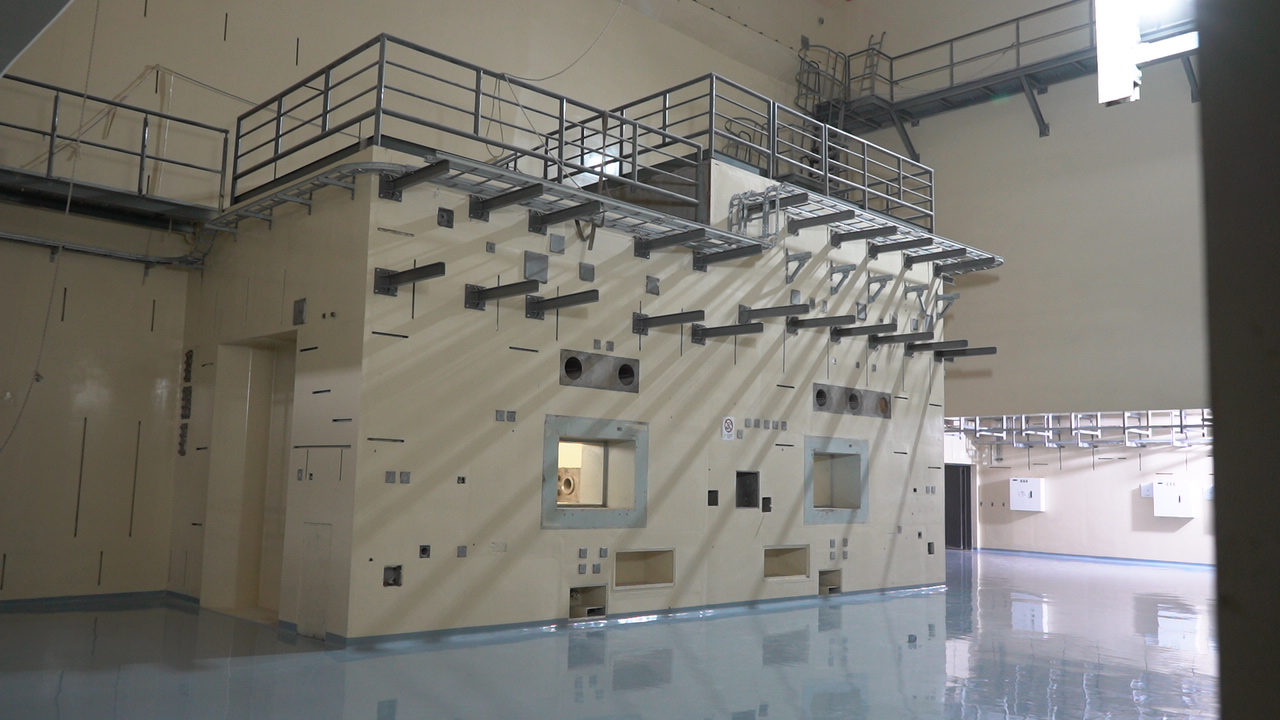The National Atomic Energy Commission is carrying out the construction of the RA-10 Argentine Multipurpose Nuclear Reactor, located at the Ezeiza Atomic Centre.
En esta página
The project is financed by National Treasure and will have a strategic impact in the areas of health, science, technology and industry. It includes the design, construction, assembly, commissioning and delivery for operation of a multipurpose nuclear reactor, developed by CNEA and INVAP, with a contribution of more than 80% of local companies and institutions in technology and associated services.
The facility will ensure domestic supply in radioisotopes for medical use, and will allow export of its products to cover 20% of world demand. It could also produce between 30 and 60 tons of doped silicon ingots, which would represent 40% of the current world market. In this way, the RA-10 will consolidate capabilities for cutting-edge technological developments in the nuclear and conventional industry, and will open up new opportunities for research in basic sciences and applications based on the use of advanced neutron techniques.
In parallel to the construction, which began in 2016, the CNEA made progress in the process of training the operations staff and in the development of future users to ensure full use of the facility.
Objectives
- Consolidate the supply of radioisotopes for medical, industrial and agricultural use for the domestic and international market in the context of growing demand.
- Consolidate national production of nuclear fuels.
- Strengthen the country's research and development capabilities through advanced neutron techniques for various fields such as bioscience, biotechnology, drugs design, materials science and technology, among others.
RA-10 characteristics
The RA-10 Multipurpose Argentine Nuclear Reactor is the result of one of the largest investments of the National State in the areas of Science, Technology and Innovation and will become a regional center of radioisotope production and basic research.
Civil works
- Site of location: Ezeiza Atomic Center
- Area of implantation: 3.85 Ha
- Total floor area to be built: 7,632m2
- Total covered area: 17.723,52 m2 (between levels -8,8 m + 26,5 m)
The facility is composed of four buildings: Reactor Building, Auxiliary Building, Neutron Guides Building and Services Building.
Multipurpose research reactor
- Power: 30MW
- Operating cycle: Continuous 29.5 days
- Molybdenum-99 production > 2,000 Ci/Weekly
- Open pool
- Fuel: Low enrichment, plate type (MTR), Uranium Silicide
- Reflector: Heavy water (D2O )
- Upword cooling flow direction in the core
- 2 diverse and independent shutdown systems
RA10+ Center

Download in PDF Back to top
Project milestones
The RA-10 Project started in 2010 and aims to design, build and commission the RA-10 Argentine Multipurpose Nuclear Reactor. The design stage involved more than one million man-hours and more than 10,000 technical documents were issued.
At present, the project has an overall cumulative progress of 80%. The civil works were completed at the beginning of 2024 and currently continue supply and assembly works. The start-up phase of the reactor is scheduled for the beginning of 2026.
2014
- Construction License obtained, granted by the Nuclear Regulatory Authority.
2016
- Start of the training and licensing stage for professionals and technicians who will make up the future reactor operating staff.
- The Provincial Agency for Sustainable Development (OPDS) granted the Certificate of Environmental Suitability.
- In March, civil works begun at the Ezeiza Atomic Center.
2018
- Reactor Pool Assembly. This milestone kicked off the supply and installation of the major components of the facility.
News in Spanish
2019
- February: Assembly of the Primary Cooling System Decay Tank.
News in Spanish - July: Assembly of the Services Pool.
News in Spanish
2020
- October: Assembly of the Primary Cooling Circuit Pumps and Heat Exchangers.
News in Spanish
2021/2022
- The work continued to progress under strict safety protocols by COVID-19.
2023
- Inauguration of the new electrical substation that extends the electric supply for the Ezeiza Atomic Center.
News in Spanish
2024
- The operators obtained their individual licenses and are in the process of training to obtain the specific licenses that will allow them to perform the reactor commissioning.
- In February, the construction of the Reflector Tank at INVAP's workshops in San Carlos de Bariloche was completed.
News in Spanish - The civil works for the four buildings were completed in March.
- August: Reflector Tank Assembly.
News in Spanish
Updated on January, 2025
RA-10 in pictures
Updated on january, 2025



